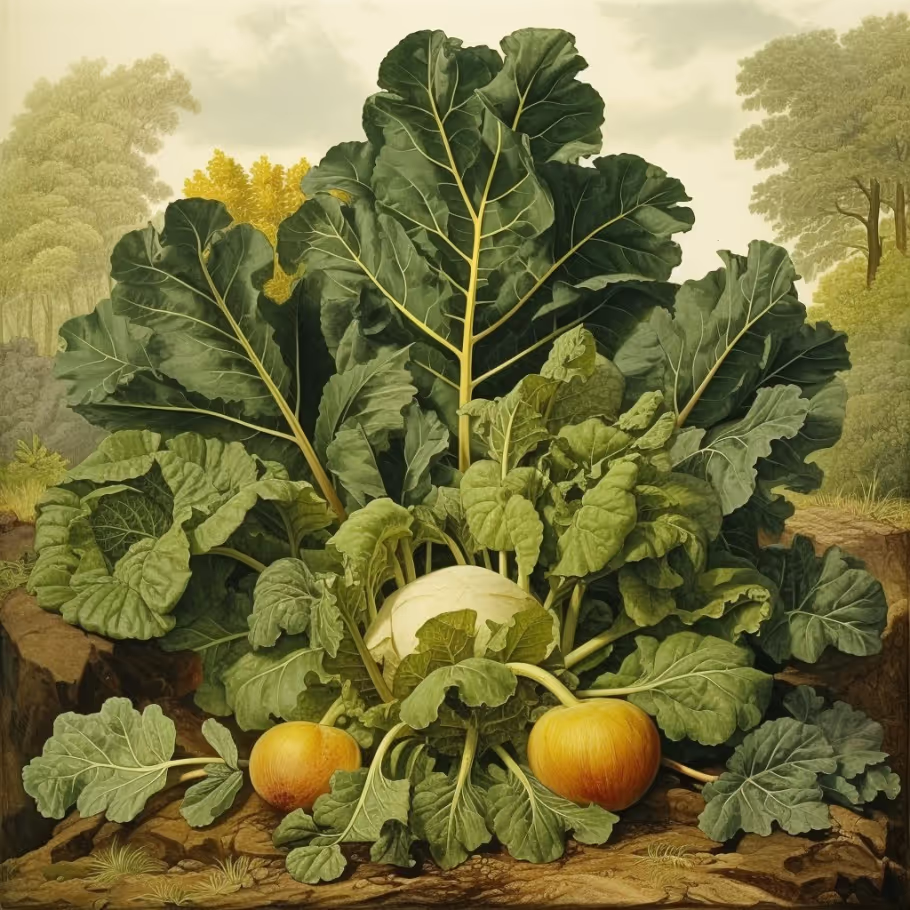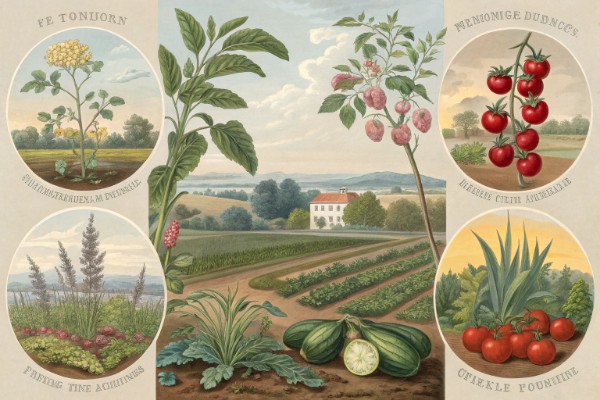Brown Leaves? How to Revive Your Plants and Keep Them Healthy

Brown leaves
Seeing brown leaves hanging limply on your favorite plant? Relax—brown leaves often signal simple issues like watering missteps, sun stress, or nutritional hiccups. Spotting brown leaves early lets you quickly pinpoint the culprit and revive your plant's leafy swagger. Here’s what you need to know to bring your garden back to vibrant life.
Cheatsheet: Rapid Fixes for Brown Plant Leaves
🌡️ Assess: Moisture, Light, Temperature
- Moisture: Too dry/wet triggers 60% of brown leaf cases. Check soil—moist an inch deep, not soggy or bone-dry.
- Light: Move to right spot. Faded leaves: shade; crisp brown: sunburn.
- Temperature: Ideal: 65–75°F (18–24°C). Avoid drafts, heaters, AC.
💧 Water: Refine Routine
- Water in AM; avoid standing water in trays.
- Adjust for season: less in winter, more in growth.
- Use lukewarm, filtered, or rainwater for sensitive plants.
✂️ Prune: Remove Damage
- Cut brown tips with sanitized scissors. Trim to healthy green edge.
- Remove whole leaves if over 50% brown; boosts new growth.
🥗 Feed: Nutrition Boost
- Fertilize spring/summer only; half-strength balanced formula, every 4–6 weeks.
- Check for yellowing with brown: may signal nutrient lack (magnesium, nitrogen).
🪴 Repot: Fix Roots
- Check roots: white & firm = healthy; mushy = rot.
- Repot rootbound plants with fresh potting mix.
🔬 Pests & Disease
- Inspect under leaves for bugs (spider mites, scale).
- Use neem oil or insecticidal soap for outbreaks.
- Remove infected leaves to slow spread.
⚒️ Tools and Products You'll Need
- Clean, sharp scissors/pruners
- Fresh, quality potting soil
- Filtered or rainwater
- Fertilizer (balanced, houseplant-safe)
- Neem oil or insecticidal soap
- Moisture meter or finger-test
- Gloves
- Watering can
🌱 Self-Sufficiency Tip
Healthy plants boost air quality, can supply herbs, microgreens, or support home food growth year-round.
Diagnosing the Brown-Leaf Mystery
Brown leaves—seeing them can feel like a grim omen. I remember stepping into my garden one crisp September morning, coffee still steaming, only to find my favorite Japanese maple shedding brown, crispy leaves.
Panic mode activated.
But hang tight; brown leaves don't always spell disaster. Years in dirt-covered boots taught me this: brown foliage is your plant's morse-code—it has something to say.
What Causes Brown Leaves on Plants?
Before we can solve the brown-leaf issue, we must decode what's happening beneath the surface. Here's the quick rundown on likely culprits:
- Underwatering or Overwatering: Hydration mistakes dry leaves to crunchy crisps or drown roots into swift decay.
- Humidity Issues: Low air moisture causes leaf tips and edges to brown, especially common with houseplants.
- Scorching Sun or Temperature Swings: Intense sunlight, heatwaves above 90°F (32°C), or quick temperature plunges injure foliage tissues.
- Nutrient Trouble or Salt Buildup: Over-fertilizing accumulates salts, burning tender leaves at the margins into unsightly browns.
- Pests or Diseases: Spider mites, fungal infections, and bacterial trouble leave plants struggling and foliage declining rapidly.
Watering Woes: Finding The Sweet Spot
I once over-enthusiastically watered my prized hibiscus; more care turned into drowned roots. Soon, leaves browned and dropped like tragic confetti—lesson learned.
So how to get watering right? Check soil moisture often—finger poked gently one inch (2.5 cm) down. If it's dry to the touch, water thoroughly until excess drains.
Remember, plants prefer deep drinks less frequently rather than daily quick sips.
"Improper watering practices cause approximately 70% of home gardening issues, including brown leaves." —American Horticultural Society
Adjusting Humidity Levels
Some plants need steamy conditions, especially tropical houseplants like fiddle-leaf figs and monsteras. Dry indoor air, intensified during winter heat seasons, stresses your green buddies, browning leaves at tips.
I keep a humidifier nearby or group plants into cozy clusters, naturally boosting humidity around them. A pebble tray filled halfway with water under the pot helps, too.
Coping with Sun Exposure and Temperature Stress
One July, temperatures soared above 95°F (35°C), and my hydrangeas instantly revolted, leaves turning toasted brown practically overnight. Shading them during peak afternoon sun saved the remaining foliage.
Place vulnerable plants where they'll skip harsh midday sun, or use blinds indoors. Outdoors, mulch generously around roots to stabilize soil temps and reduce evaporation stress.
Taming Fertilizer and Nutrient Issues
Excessive fertilizer quickly builds harmful salts; I've witnessed firsthand how plants protest with dramatic, brown edges. Flush pots occasionally by irrigating gently until water streams clearly out drainage holes, washing away excess salts.
Choose balanced, slow-release fertilizers and apply sparingly—your plants thrive with less rather than excess.
Dealing With Pests and Diseases
If watering and environmental checks don't indicate any problem, consider pests or pathogens. Upon closer inspection one summer, I discovered spider mites had thoroughly colonized my ivy, sucking leaves dry, turning greenery to golden-brown tragedy.
Shake pests off with strong water blasts, apply insecticidal soap, or isolate affected plants to minimize spread. Fungicides may help fungal infections—but swift action remains your most effective tool.
The Good News: Brown Leaves Often Heal!
Plants showing brown leaves can recover quickly with timely adjustments. Trim damaged foliage cleanly, encourage healthy new growth, and celebrate how resilient nature really is.
In gardening, sometimes mistakes become our greatest teachers. Brown leaves whispered warning signs that made me a better caretaker, gardener, and observer.
So panic less, observe carefully, adjust patiently, and watch your plants reclaim their vibrant green beauty.
Frequently Asked Questions About Brown Leaves
Why are the leaves on my plant turning brown?
Brown leaves typically indicate environmental stress on your plant, such as inadequate watering, nutrient imbalance, poor light conditions, or a disease issue. Examine your watering habits, check soil moisture, and consider environmental factors in diagnosing the cause.
How does improper watering cause leaf browning?
Too little water leaves plants dehydrated, leading to dry, brittle, brown leaf tips. Conversely, overwatering starves roots of oxygen, promoting root rot and resulting in wilted, brown foliage—be mindful of balanced moisture levels.
Can overly strong sunlight lead to brown leaves?
Yes. Extended exposure to direct sunlight can scorch delicate foliage, causing brown, dried-out patches. Adjust your plant's placement or introduce partial shade if scorching appears evident.
Are brown leaves an indicator of nutritional deficiency?
Absolutely. Plants lacking essential nutrients demonstrate leaf discoloration. Notably, insufficient magnesium produces distinctive brown leaf edges. Consider regular fertilization or using quality compost to replenish nutrients naturally.
Do pests and diseases cause leaf browning?
They can. Insect infestations, fungal infections, and bacterial diseases frequently manifest as browning leaves. Inspect your plant closely, particularly the leaf undersides, for signs of insects or fungal growth, and take prompt treatment measures.
What's the ideal humidity to prevent leaves from browning?
Most houseplants thrive in humidity levels between 40% and 60%. If humidity drops below this range—particularly indoors during colder months—leaf edges might turn brown. Use a humidity tray or a household humidifier to maintain suitable humidity.
Can temperature fluctuations affect leaf coloration negatively?
Yes, sudden temperature changes or extremes can stress plants, causing leaf discoloration. Maintain consistent indoor temperatures of approximately 65°F to 75°F (18°C to 24°C), avoiding drastic fluctuations or drafts.
Should I prune affected brown leaves immediately?
Removing severely damaged or diseased leaves helps the plant allocate resources effectively to healthy growth. Use clean, sharp pruning tools to eliminate compromised foliage promptly, which promotes vigorous new growth.
Brown leaves aren’t a death sentence—they’re your plants trying to tell you something. Listen close: overwatering, poor soil fertility, pests, or just plain neglect can all play a part. Strip away what’s dead, feed your soil, and adjust your watering. Sometimes, it’s about stepping back and letting the plant do its thing—nature’s got grit. If you want to push further, deepen your understanding of plant physiology or experiment with trench composting to boost soil life. Plants bounce back if you pay attention to the basics. Brown leaves are just a nudge: tune in, tweak what you can, and let the garden teach you the rest.
The Homesteader's Take on Plant Revival and Brown Leaves
Brown Leaves as Mulch and Compost
- Recycle fallen brown leaves into mulch to enrich soil nutrients, control weeds, and retain moisture naturally.
- Mix dry, brown leaves with fresh greens in compost piles (optimal ratio: 3 parts brown to 1 part green) for balanced decomposition.
- Boost compost microbial activity by shredding brown leaves before layering them with kitchen scraps.
Natural Remedies from Your Pantry and Property
- Banana Water: Soak banana peels overnight; apply potassium-rich liquid weekly to reverse leaf browning caused by nutrient deficiency.
- Eggshell Infusion: Crush eggshells into water (2 tablespoons shells per 1 liter/4 cups water), steep 48 hours; use monthly to supply calcium and prevent brown tip formation.
- Rainwater Harvesting: Collect and use rainwater instead of tap water to avoid chlorine and fluoride build-up, reducing leaf browning naturally.
Sustainable Watering Habits
- Greywater Reuse: Direct cooled cooking water from steamed vegetables or pasta to plants; nutrients help revive leaf coloration.
- Olla Irrigation: Bury porous clay pots near plant roots, refill weekly; provides slow, consistent moisture, minimizing brown leaf edges caused by drought stress.
Self-Sufficient Pest and Disease Control
- Neem Leaf Spray: Steep 50g dried neem leaves per liter (4 cups) hot water overnight; spray plant leaves bi-weekly as natural defense against browning from fungal diseases and pests.
- Chamomile Tea Mist: Brew strong chamomile tea, cool completely; mist leaves weekly to prevent fungal infections resulting in leaf browning.
Brown Leaf Indicators for Homestead Health
- Early leaf browning can signal soil pH imbalance—target ideal range: slightly acidic (6.0–6.8) for most garden crops.
- Repeated leaf browning across various crops may indicate inadequate crop rotation or soil depletion; rotate plants annually and incorporate nitrogen-fixing legumes.
- Continual leaf tip browning suggests water stress—evaluate irrigation schedule; water deeply less often instead of shallow frequent watering.
Find out which plants will thrive in your garden!
Answer a few fun questions and get custom plant recommendations perfect for your space. Let’s grow something amazing together!

start your season





